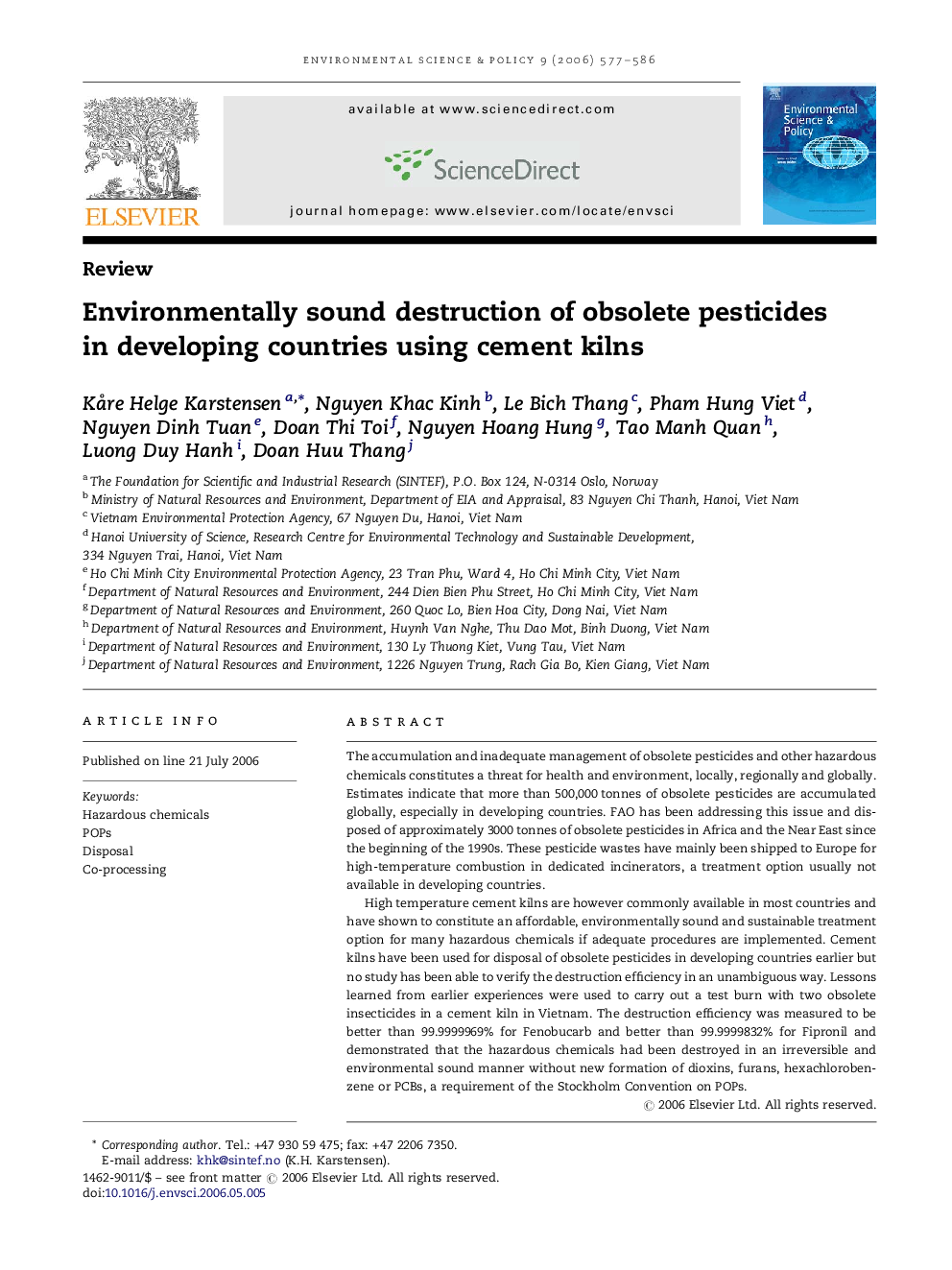| Article ID | Journal | Published Year | Pages | File Type |
|---|---|---|---|---|
| 1054384 | Environmental Science & Policy | 2006 | 10 Pages |
The accumulation and inadequate management of obsolete pesticides and other hazardous chemicals constitutes a threat for health and environment, locally, regionally and globally. Estimates indicate that more than 500,000 tonnes of obsolete pesticides are accumulated globally, especially in developing countries. FAO has been addressing this issue and disposed of approximately 3000 tonnes of obsolete pesticides in Africa and the Near East since the beginning of the 1990s. These pesticide wastes have mainly been shipped to Europe for high-temperature combustion in dedicated incinerators, a treatment option usually not available in developing countries.High temperature cement kilns are however commonly available in most countries and have shown to constitute an affordable, environmentally sound and sustainable treatment option for many hazardous chemicals if adequate procedures are implemented. Cement kilns have been used for disposal of obsolete pesticides in developing countries earlier but no study has been able to verify the destruction efficiency in an unambiguous way. Lessons learned from earlier experiences were used to carry out a test burn with two obsolete insecticides in a cement kiln in Vietnam. The destruction efficiency was measured to be better than 99.9999969% for Fenobucarb and better than 99.9999832% for Fipronil and demonstrated that the hazardous chemicals had been destroyed in an irreversible and environmental sound manner without new formation of dioxins, furans, hexachlorobenzene or PCBs, a requirement of the Stockholm Convention on POPs.
